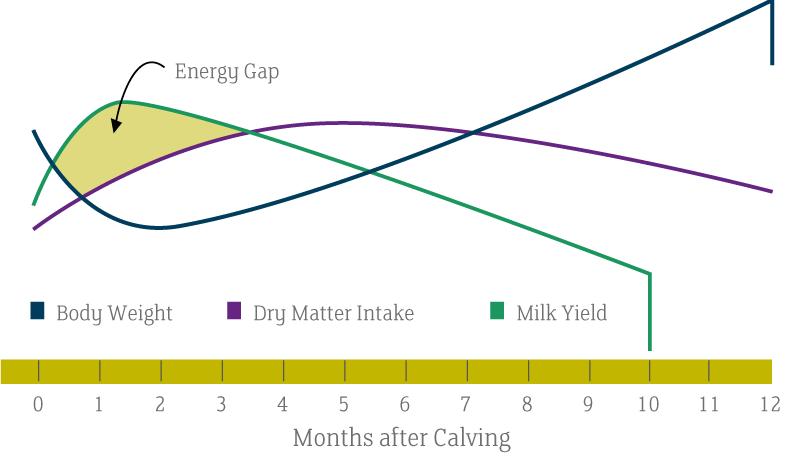When to feed fat
Fat supplements can be included in diets at any stage of the production cycle, but are most beneficial in periods of high energetic demand. In meat-producing animals, fat is often targeted to the finishing phase e.g. in the final 100-day finishing period for beef cattle when increased energy density can improve energy supply without risk of acidosis from increasing starch concentrations.
With lactating animals such as dairy cows, the early lactation period is the key target as the energy requirements for milk production are greater than that which can be supplied from dry matter intake, resulting in a period of ‘negative energy balance’ (the ‘energy gap’) and a loss of body condition (‘milking off their backs’) (Figure 1). Hence, fat supplements are often added to diets at this stage to increase energy density and energy per bite.

Figure 1 The 'energy gap' in early lactation
However, responses to fat supplements can be achieved throughout lactation and data with grazing cows reported higher milk yield throughout a 200-day feeding period when Megalac rumen-protected fat was included at 250 g/day (click here for details).
Consideration must also be given to type of fat supplement offered as different types of supplement are targeted to meet different requirements (see section ‘Rumen-protected fat supplements’).